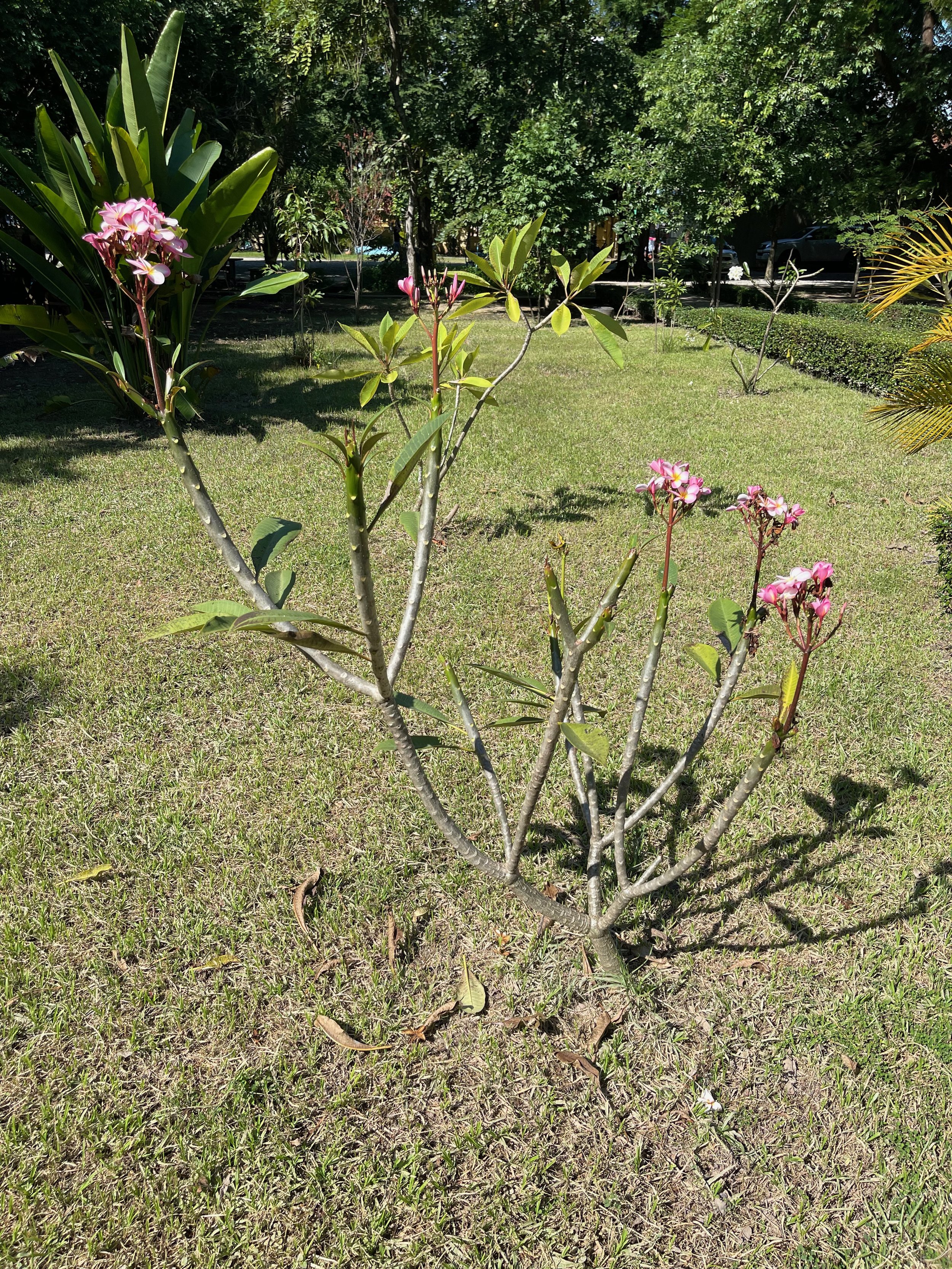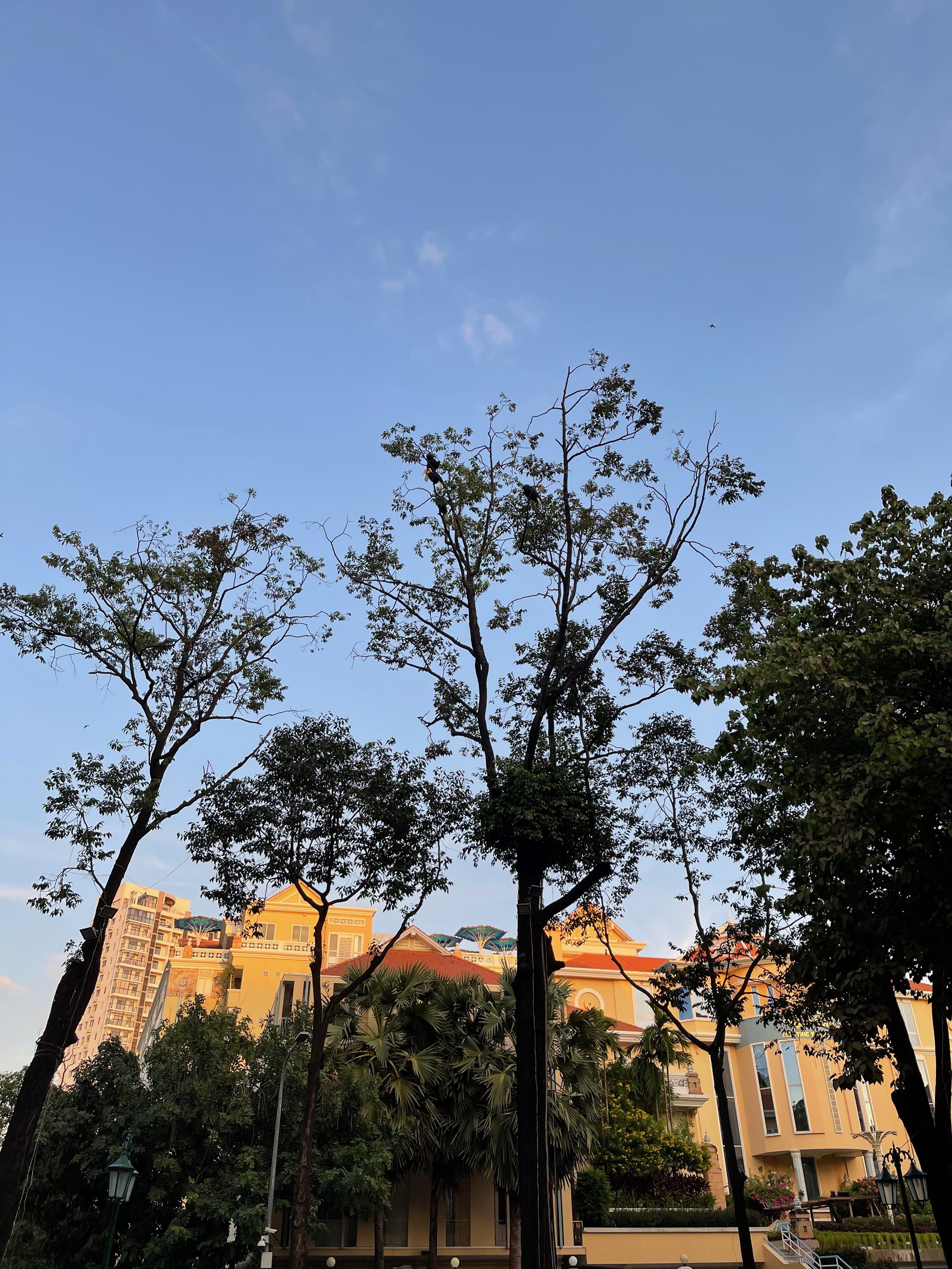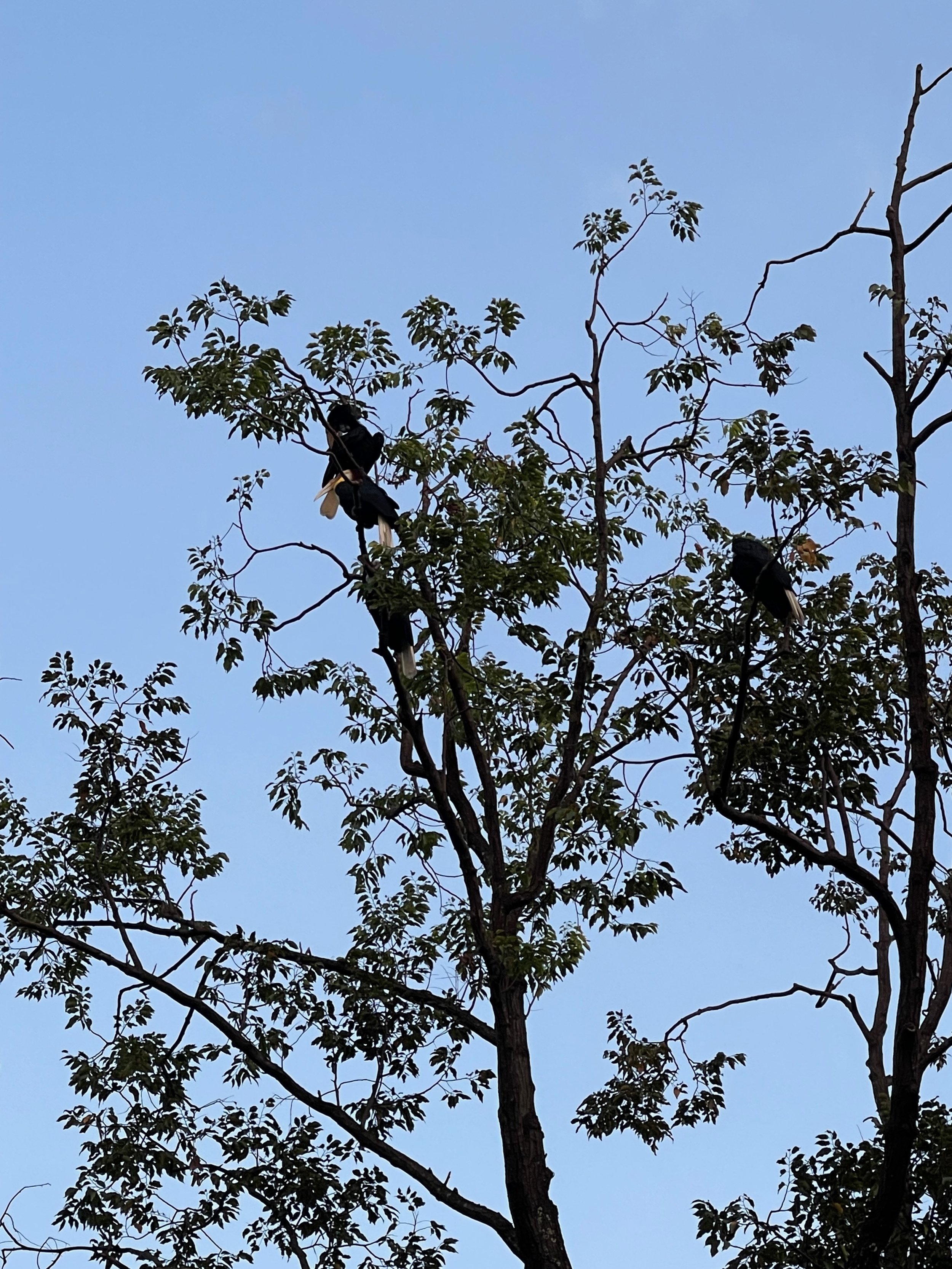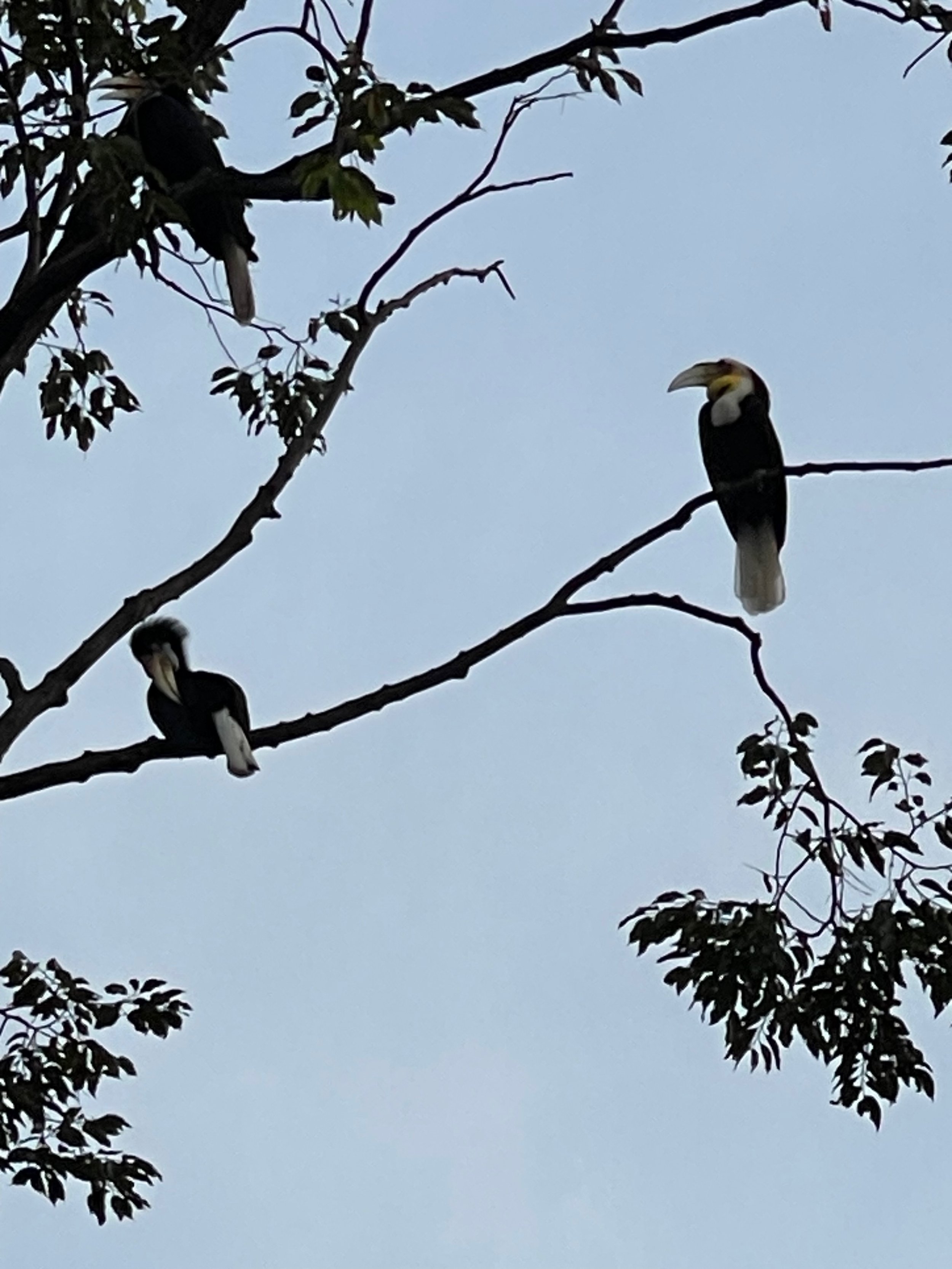A Somber Day in Phnom Penh
By Lauren Gerzina & Justin Hayes
Today, we visited the Choeung Ek Genocidal Center and the S.21 Tuol Sleng Genocide Museum in Phnom Penh.
Some Important Background
On April 17, 1975, Khmer Rouge soldiers entered Phnom Penh after having taken over the city and the government. Many residents welcomed the troops with open arms, believing that peace may have finally come to the war-torn country.
Starting in 1969, President Nixon ordered extensive bombings in Eastern Cambodia to disrupt supply lines to the North Vietnamese. These bombings forced people from the countryside into larger cities like Phnom Penh. U.S. air strike campaigns also sowed anger in the country and helped the radical Khmer Rouge recruit supporters and cadets.
The Khmer Rouge, led by Pol Pot, were a radical nationalist and communist sect devoted to creating an equal agrarian society. They rejected modernity, all Western ideas, and any trappings of urban society, including the educated, professionals, doctors, lawyers, and any other vocation in a modern society. They also believed in the abolition of private property, money, and religion.
Soon after the Khmer Rouge rolled into Phnom Penh on April 17, they began ordering the millions of residents in the city onto buses and trucks that would take them into the countryside. They emptied houses, schools, and even hospitals at gunpoint. Thousands died amid the chaos of the first day of Khmer rule.
The middle class and educated professionals who lived in urban areas were labeled as enemies. Art was destroyed, monks were labeled as parasites, and temples were converted to other use. People were forced to eat communal meals of rice out or large pots. Names were taken away and people were referred to as “It.” People were not allowed to show affection and children were separated from their parents. Cambodians had to devote themselves entirely to the Angkar or “the organization” and abandon all former loyalties and attachments.
Some people who had fled the countryside due to bombings were also labeled as enemies while the rest were driven back to the farms to work in collectivized forced labor camps. They devoted all of the nation’s human capital to the production of rice and demanded an impossible three tons of rice per hectare (about 2.5 acres). Not having the strength or the skills and knowledge for farming, thousands more died of exhaustion or starvation. Somewhere between 500,000 to 1.5 million people died from the famine created by the Khmer regime.
Those who were deemed disloyal to Angkar were sent to one of the 200 prisons set up throughout the country, where they were interrogated, tortured, or executed. Some were executed or died to excessive torture at the prisons while others were taken to rural areas or old cemeteries – these were known as the “killing fields.” After a brutal execution, their bodies were buried in mass graves with hundreds of others. As Pol Pot’s paranoia increased, members of the Khmer Rouge were accused of being disloyal or traitors or spies and eventually suffered similar fates.
The Khmer Rouge regime was driven out of power in January 1979 as Vietnamese forces entered the country, sending Khmer troops into hiding. In less than four years, between 1.5 million and 3 million Cambodians died as a result of the famine, torture, and mass killings of the Khmer regime, or nearly a quarter of the country’s entire population.
Choeung Ek Genocidal Center
After a quick breakfast at a Pho restaurant next to our Airbnb, we called a Grab to take us to the Choeung Ek Genocidal Center, about a 30 minute drive southwest of the city. We got our tickets and audio guides and started our tour outside of a large stupa.
The Choeung Ek Genocial Center was once a Chinese cemetery. You can still see a few old headstones with Chinese characters on them. Under the Khmer Rouge, this site was one of the hundreds of killing fields spread throughout the country. It was one of the main places where prisoners from the main Tuol Sleng prison in the heart of Phnom Penh were taken to be executed.
Our audio guided tour was as informative and detailed as it was tragic. It took us to several of the mass graves, including one where over 400 bodies were found, one with the headless skeletons of what they assumed were former Khmer Rouge soldiers, and one with women and infants. At the last one, a tree was adorned with bracelets in tribute to the victims there. When the site was found, they quickly discovered that the tree was used to murder those who lay in the pit below.
The large stupa was built to honor all of those who found their final resting place in killing fields across the country. Inside, it was filled with several stories of glass cases containing the remains of those who were found here, separated by skulls, femurs, hip bones, and other body parts that they sought to identify.
The audio guide contained several stories of victims and survivors and explained the history of the Khmer Rouge regime and its impact on Cambodian society. It was definitely worth purchasing the audio guide to better understand what we were looking at.
S.21 Tuol Sleng Genocide Museum
We couldn’t get a car on Grab, so we called a Tuk Tuk to take us back to the city for our next tour at the S.21 Tuol Sleng Genocide Museum. Before it was a prison, Tuol Sleng was a secondary school called Tuol Svay Prey. The Khmer Rouge converted it into Security Prison 21, which held between 1,000 and 1,500 prisoners at a time. Around 20,000 people made their way through the prison during the Khmer rule. Only about 12 people survived.
The prison was crude and makeshift. They had converted each of the school buildings for specific uses. One building was converted for torture and interrogation. When the prison was discovered, bodies of those who were tortured to death were found on the iron beds. Most were unable to be identified.
Other buildings were used to house prisoners. One building was three floors. On the first floor, bricks were used to divide up the rooms into small “cells” where prisoners were chained to the floor by their ankles. The second floor was also divided up into cells, but they used wood. The top floor wasn’t subdivided. Instead, prisoners were chained to the floor, forced to lie down on crude wooden blocks.
Many of the accounts of what took place there came from photographs of the prisoners and Khmer Rouge cadets, many of whom were just kids (and many would later become prisoners there). Other accounts came from a survivor who was there as a child and later painted famous depictions of his experience witnessing the torture and terrible living conditions. His paintings were in another part of the exhibit.
We also purchased an audio guide for this museum. It actually had the same narrator as the last one and also provided important context to what we were looking at as well as stories of some of the victims of the Khmer’s totalitarian regime.
The museum also went into more detail about the Khmer regime’s failed attempts to create a communist society from the inability to produce enough food to feed everyone to the impossible and dehumanizing effort to make everyone loyal to Angkar. One memorable story from the audio guide discussed how, because the Khmer either executed or imprisoned all of the doctors, they had to “train” their soldiers to provide medical care. They would practice their crude form of “medicine” on prisoners, alive or dead. They would even take blood from prisoners to give to soldiers, but of course, they didn’t know how to check for blood types or other medically relevant information, so there were many botched procedures.
It was a long morning. But we felt, just as if we were visiting Germany or Poland, that it was necessary to take in both the good and the bad parts of Cambodia’s history during our trip. The effects of the Khmer regime are still being felt in the country today, from the thousands of land mines that are still maiming and killing people to the trauma of nearly a quarter of the country being lost in the span of four years. Everyone in the country was affected and it is still clearly recovering.
On A Lighter Note . . .
Suffice it to say, after visiting both genocide museums, we were both in a somber mood. Lauren was starving and had found a cute café called Backyard Café which had a very good allergen menu. We grabbed a tuk tuk to the restaurant and collapsed into some large comfy chairs upstairs in the A/C. The café had REALLY fast internet (way faster than anything else we have found in SE Asia – including at our American hotels) and a QR code menu to order things from the kitchen. Justin ordered a falafel wrap and Lauren ordered a chicken avocado rice bowl. We also ordered kombuchas and two gluten free, dairy free cheesecakes, which were delicious! The food certainly improved our moods.
Because it was still really hot, we took a tuk tuk back to the Airbnb to rest in the A/C for a few hours. At 4pm, we caught a ride over to Wat Phnom Daun Penh (a Buddhist temple at the top of a large hill in the middle of downtown). Because we had watched a ton of YouTube videos to prepare for our trip, we learned that this temple 1) was beautiful and 2) had rare great hornbill birds that lived in the large park surrounding the temple.
As soon as we got to the park, we were on bird watch. We wandered around the grounds, up to and inside the temple and then basically gave up looking for the birds. We started towards the exit of the park and saw a gathering of people with binoculars and large cameras all intently watching the trees. Within minutes, great hornbills started soaring into the trees above us. The birds were enormous (probably two feet tall) with large beaks which reminded us of toucans. Lauren was so excited and got lots of pictures and videos of the birds. A nice French couple also offered for us to use their binoculars to get an even better look at them. It was such a fun and cool experience, especially seeing birds you’d normally expect to see in the jungle sitting on lamp posts in the middle of the city.
At this point, we were both thirsty and decided we could go for some bubble tea. We walked about 10 minutes over to a swanky underground mall in the financial district and ordered some delicious tea. While sitting there, we looked for a place for dinner. Again, our YouTube gurus helped us out. About two blocks away was a restaurant called Labaab, which had glowing reviews from the vlogger Alina Mcleod.
We walked over to the restaurant and grabbed a table. Justin was very happy to try some new Khmer food on our last dinner in Cambodia. He ordered a Khmer beef dish with rice and Lauren ordered a pineapple shrimp fried rice that came in a carved out half pineapple. It was the best fried rice we ever had.
After dinner, we grabbed a tuk tuk back to the Airbnb, packed, and called it a night. The next day, we travel to our third new country – Thailand!


















































